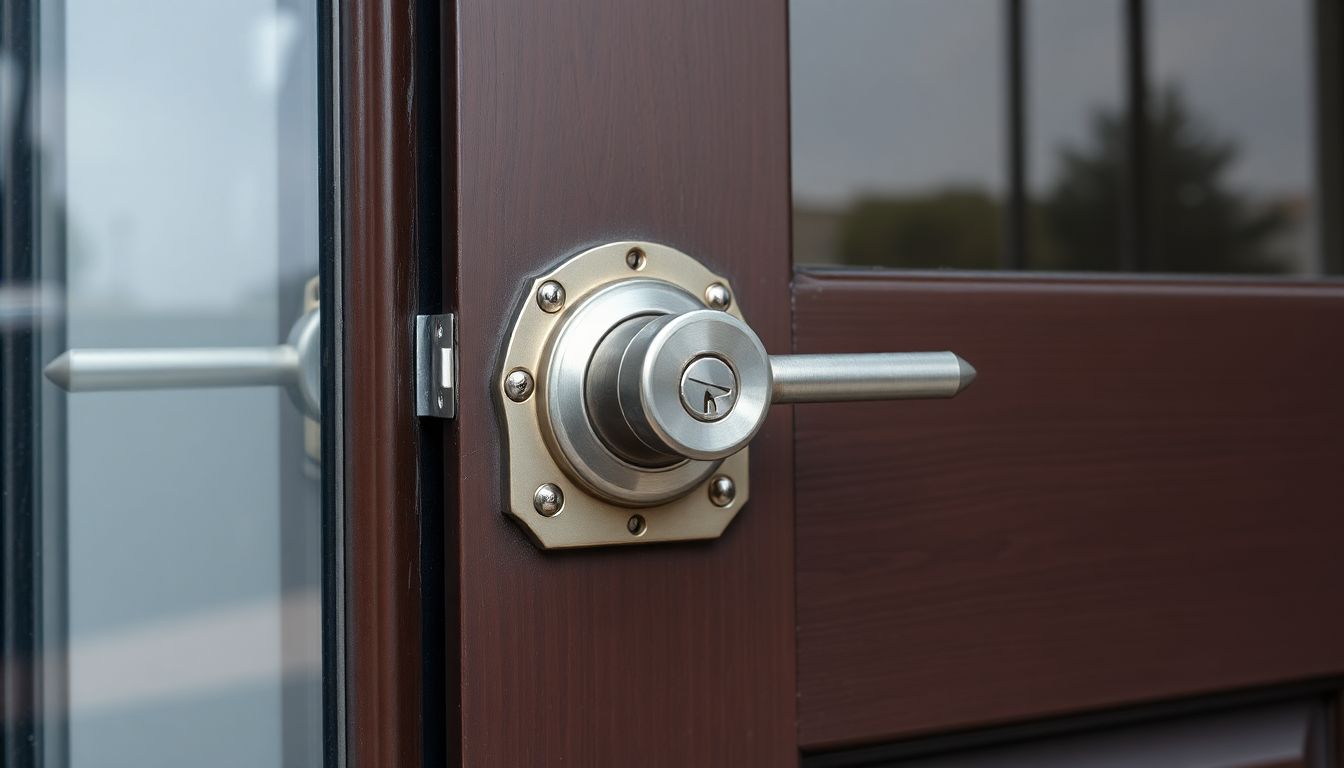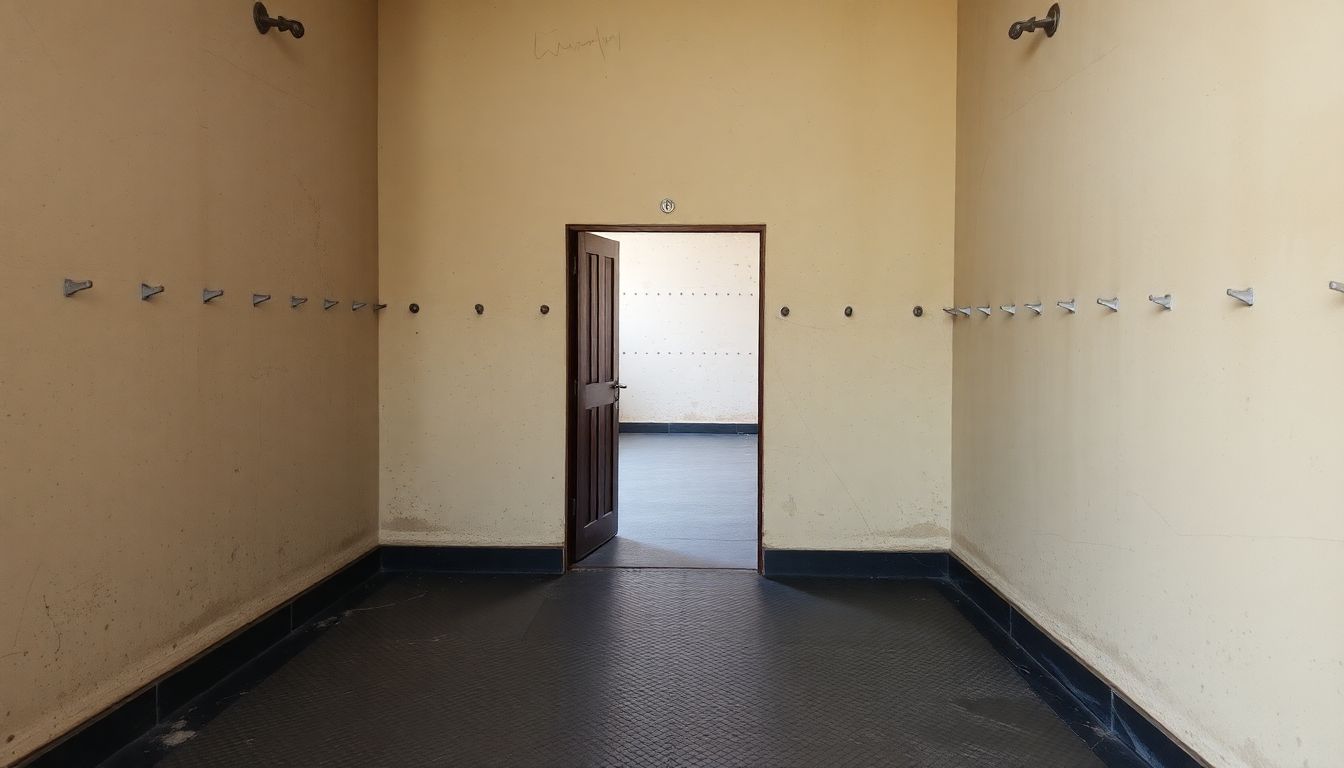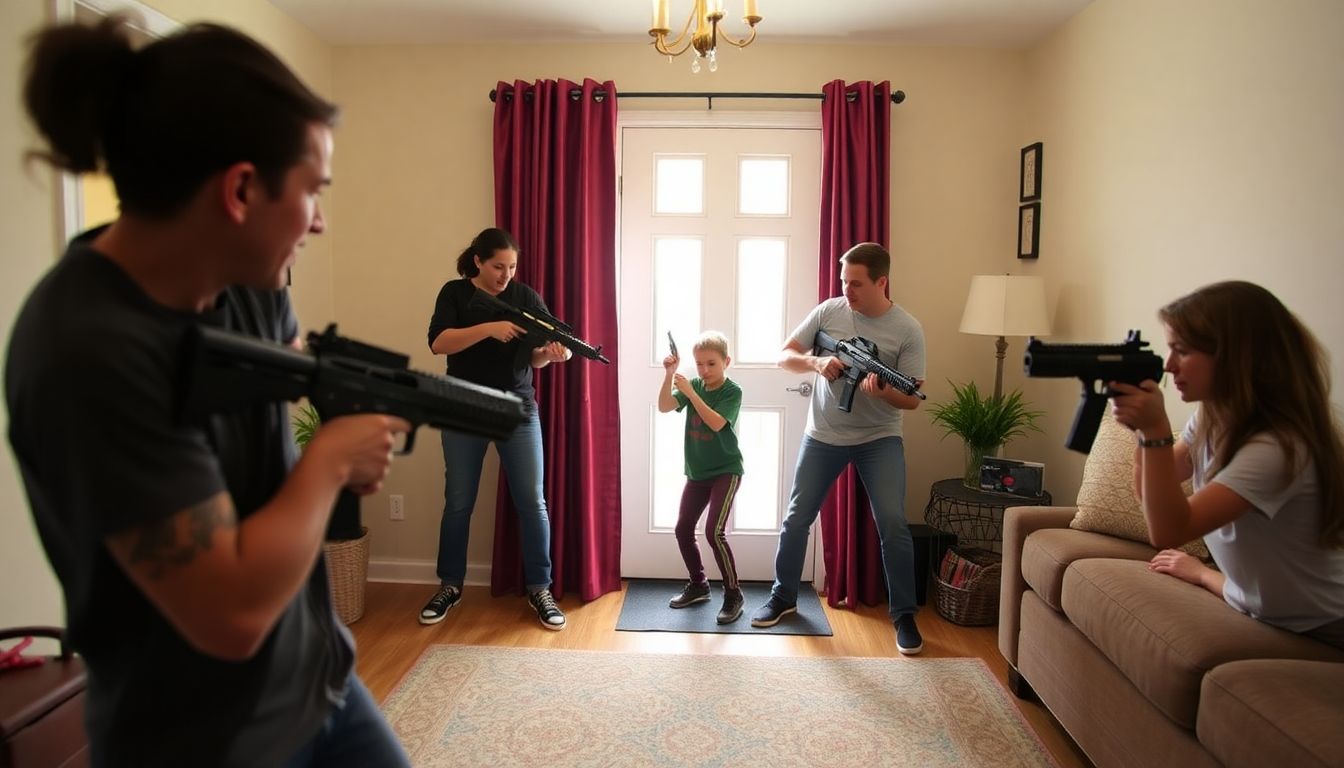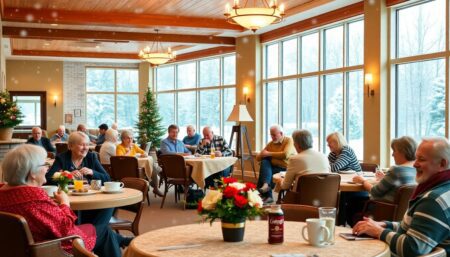In the ever-evolving landscape of our world, the importance of home defense and security measures has never been more paramount. According to a recent study by the FBI, burglaries occur every 15 seconds in the United States, with homes being the primary target. This alarming statistic begs the question: Are you prepared to protect your family and property when the unexpected knocks at your door?
As a prepper, you understand the importance of being proactive and self-reliant. You’ve stockpiled food, water, and essential supplies, but have you given equal thought to safeguarding your home and loved ones? This comprehensive guide is designed to empower you with the knowledge and strategies necessary to fortify your home and deter potential threats. By the end of this article, you’ll agree that home defense is not just a luxury, but a necessity in today’s uncertain times.
We promise to delve into the heart of home defense, exploring a myriad of security measures that range from the basics to the more advanced. We’ll guide you through the process of assessing your home’s vulnerabilities, implementing robust security systems, and preparing your family for various emergency scenarios. We’ll also introduce you to the concept of ‘hardening’ your home, making it less attractive to potential intruders and more resilient to natural disasters.
In this article, you’ll find a wealth of practical tips, real-life examples, and expert insights. We’ll demystify the world of home defense, making it accessible and relevant to every prepper. So, whether you’re a seasoned survivalist or just starting your journey into preparedness, this guide is your key to unlocking a safer, more secure home environment. Let’s dive in and explore the fascinating world of home defense, where every precaution counts, and every measure brings you one step closer to peace of mind.
Mastering Security Measures for Comprehensive Prepper Protection
Embarking on the journey to become a well-prepared individual, or ‘prepper,’ involves a multifaceted approach, with security measures serving as a cornerstone. Mastering these measures isn’t just about installing the latest surveillance system or learning the most advanced self-defense techniques; it’s about cultivating a mindset of vigilance, adaptability, and resilience. It’s about understanding that security is not a one-size-fits-all concept, but a dynamic process that evolves with your lifestyle, environment, and the ever-changing world around you. It’s about turning your home into a fortress, not just with locks and alarms, but with strategic landscaping, reinforced doors, and emergency supplies that could turn your humble abode into a sanctuary in times of crisis. It’s about learning to read people and situations, to anticipate threats before they materialize, and to respond swiftly and decisively when they do. It’s about understanding the law and your rights, and knowing when to stand your ground and when to retreat. It’s about mastering the art of stealth and evasion, of blending into the background when necessary, and of moving silently and swiftly when action is required. It’s about more than just surviving; it’s about thriving in the face of adversity. So, let’s delve into the fascinating world of comprehensive prepper protection, where every step you take brings you one step closer to true security and self-sufficiency.

Understanding Home Defense: Mindset and Principles
Home defense is a critical aspect of personal safety and security, and it’s essential to approach it with the right mindset and understanding. A defensive mindset is not about being paranoid or fearful, but rather being aware, proactive, and prepared. It’s about understanding that your home is your castle, and it’s your responsibility to protect it and the people within it. This mindset is the foundation of home defense and is crucial for effective prepping.
The principles of home defense are rooted in this mindset and can be applied to various aspects of prepping. First and foremost, it’s about deterrence. The goal is to make your home a less attractive target to potential intruders. This can be achieved through simple measures like good lighting, secure locks, and visible security cameras. It’s also about being prepared. This means having a plan in place, knowing how to use any defensive tools you have, and having supplies on hand in case of an emergency.
Home defense is not the same as home invasion. Home defense is about preventing an intrusion from happening in the first place, or stopping it as soon as possible if it does. It’s about being proactive and taking control of the situation. Home invasion, on the other hand, is a reactive response to an intrusion that has already occurred. It’s about protecting yourself and your family from an immediate threat.
Understanding the legal aspects of home defense is also crucial. In many jurisdictions, you have the right to defend yourself and your property, but there are limits to this right. You must use reasonable force, and you must retreat if it’s safe to do so. It’s important to familiarize yourself with the laws in your area and to act within the bounds of the law. It’s also a good idea to have a plan in place for dealing with law enforcement if they are called to your home.
In conclusion, understanding home defense is about more than just having a security system or a gun. It’s about having the right mindset, understanding the principles of defense, and being prepared. It’s about being proactive, not reactive. It’s about understanding the difference between home defense and home invasion, and knowing the legal aspects of self-defense. It’s about being responsible for your own safety and the safety of those you love.

Securing the Perimeter: Strategic Landscaping
Securing the perimeter of your home isn’t just about installing high-tech security systems; it’s also about creating a natural, welcoming yet secure environment through strategic landscaping. This approach, often referred to as ‘criminegarden’ or ‘crimineproofing’, uses plants, trees, and other landscaping elements to enhance home security in several ways.
The first line of defense is creating natural barriers. A well-planned landscape can make it difficult for intruders to approach your home undetected. This can be achieved by strategically placing tall, dense shrubs and trees along the perimeter of your property. Thorny plants like roses or holly can also act as a deterrent, making it uncomfortable for anyone trying to climb over them. Remember, the goal is to create a natural, yet formidable barrier that doesn’t compromise your view or the aesthetic appeal of your landscape.
Improving visibility is another crucial aspect of perimeter security. A well-lit, open landscape makes it harder for intruders to hide and move around undetected. Prune trees and shrubs to allow for clear sightlines, and consider planting low, flowering shrubs near windows and entry points to enhance visibility without blocking views. Additionally, strategic placement of outdoor lighting can significantly improve visibility. Motion-activated lights are an excellent option as they not only illuminate dark areas but also draw attention to any movement.
Lighting also plays a significant role in perimeter security. It’s not just about illuminating the area but also about creating a welcoming, well-lit environment that deters intruders. Path lights, flood lights, and solar lights can all be used to create a well-lit perimeter. Consider using warm, soft lighting that doesn’t disturb your neighbors but is bright enough to deter potential intruders. Remember, the goal is to create a secure, inviting environment that makes your home less attractive to criminals.

Fortifying Entry Points: Doors and Windows
Strengthening your home’s entry points is a crucial step in enhancing overall security. Doors and windows are often the primary targets for intruders, so reinforcing them can significantly deter break-ins. Let’s explore some effective methods to fortify these entry points.
The first line of defense for your doors is a robust, high-quality deadbolt. Standard locks can be easily manipulated, but a deadbolt with a reinforced steel bolt that extends deep into the door frame provides much better resistance. Ensure that the deadbolt is at least one inch long and has a reinforced metal plate, known as a strike plate, on the door frame. The strike plate should be securely fastened with long screws that extend into the door frame’s stud, not just the door frame itself.
Next, consider installing a security door brace. These devices can be easily installed on your door and provide additional support, making it much harder for an intruder to force the door open. Some models can be quickly deployed in case of an emergency, while others are designed to be permanently installed.
Window security is another critical aspect. One simple yet effective way to reinforce windows is by using security film. This film is applied to the glass and holds it together if it’s broken, making it much harder for an intruder to gain access. It also provides some level of protection against smash-and-grab thefts. Additionally, consider installing window security bars or grilles for added protection.
For sliding glass doors, which are particularly vulnerable, consider installing a Charley bar or a similar device. These bars fit into the track of the door and prevent it from being forced open. You can also use a wooden dowel or a broom handle as a makeshift Charley bar by placing it in the door track.
Lastly, ensure that all your doors and windows are well-lit. Motion-activated lights can deter potential intruders, as they prefer to operate under the cover of darkness. Additionally, keep shrubbery and trees trimmed back from your windows to eliminate hiding spots and make it harder for intruders to approach undetected.
In conclusion, reinforcing your doors and windows involves a combination of robust hardware, security film, and strategic placement of barriers. By implementing these measures, you can significantly enhance the security of your home and deter potential intruders.

Strengthening the Foundation: Reinforcing Walls and Floors
Strengthening the foundation of your home’s security involves reinforcing both interior walls and floors to make them more resistant to breaching. This can be achieved through a combination of strategic reinforcement techniques and the use of robust materials. Let’s delve into the details of how to fortify your home’s interior.
Reinforcing interior walls is a crucial step in enhancing your home’s security. One effective method is to replace traditional wooden studs with metal studs. Metal studs are significantly stronger than their wooden counterparts, providing an additional layer of resistance against forced entry. To install metal studs, first, remove the existing drywall and insulation. Then, measure and cut the metal studs to fit the wall’s height. Secure them in place using screws or welds, ensuring they are evenly spaced and aligned. Once the metal studs are in place, you can reinstall the drywall and insulation, creating a robust barrier that is much more difficult to breach.
Another essential aspect of reinforcing interior walls is the use of security doors. Security doors are designed to withstand forced entry attempts, making them an excellent choice for entry points and other vulnerable areas. When selecting a security door, look for one that is made of solid materials such as steel or solid wood, and features a reinforced frame and lock. Additionally, consider installing a strike plate on the door frame to further enhance its strength. To install a security door, follow the manufacturer’s instructions, ensuring that it is properly aligned and secured in place.
Reinforcing floors is another critical step in strengthening your home’s security. One effective method is to install reinforced concrete slabs. Reinforced concrete slabs are made by embedding steel reinforcement bars within the concrete, creating a strong and durable surface that is resistant to breaching. To install reinforced concrete slabs, first, prepare the subfloor by ensuring it is level and stable. Then, lay out the steel reinforcement bars in a grid pattern, spacing them evenly apart. Pour the concrete over the reinforcement bars, ensuring that they are completely covered. Allow the concrete to cure for the recommended time before using the floor.
In addition to these reinforcement techniques, there are other steps you can take to further enhance your home’s security. Consider installing a home security system, which can deter potential intruders and provide you with peace of mind. Additionally, ensure that all windows and doors are properly secured with high-quality locks, and consider installing motion-activated lighting to illuminate dark areas around your home. By taking these steps, you can create a fortress-like home that is resistant to breaching and provides you with the security you deserve.

Eyes on the Prize: Surveillance Systems
In the ever-evolving landscape of home security, surveillance systems have emerged as a cornerstone of defense, offering a sense of safety and peace of mind. These systems serve a dual purpose: they act as a deterrent to potential intruders and provide valuable evidence in case of a break-in. The importance of surveillance systems lies in their ability to monitor our homes in real-time, alerting us to any suspicious activity and enabling swift action.
The spectrum of surveillance systems is vast, catering to a range of needs and budgets. At the entry-level, motion-activated lights are a simple yet effective solution. They illuminate dark areas, startling potential intruders and drawing attention to their presence. A step up from this are motion sensor cameras, which capture images or videos when they detect movement, providing visual evidence.
For those seeking more comprehensive coverage, Closed Circuit Television (CCTV) systems are an excellent choice. These systems consist of strategically placed cameras that transmit footage to a recording device. They can be set up to monitor specific areas, both indoors and outdoors, and can be integrated with other security features like alarms and motion sensors. Some advanced systems even offer facial recognition and license plate reading capabilities.
While the benefits of surveillance systems are undeniable, it’s crucial to consider the legal and ethical implications. Firstly, it’s essential to respect privacy laws. In many jurisdictions, it’s illegal to record or monitor areas where there is a reasonable expectation of privacy, such as bathrooms or bedrooms. It’s also important to inform others, like neighbors or visitors, that they are being recorded.
Moreover, the ethical use of surveillance systems involves balancing security with the potential invasion of privacy. It’s a fine line to walk, and it’s up to each individual to decide where that line is drawn. Some people might feel comfortable with extensive surveillance, while others might prefer a more minimal approach. Ultimately, the key is to use these systems responsibly, ensuring that they enhance our security without compromising our values.

Arming Up: Choosing and Storing Home Defense Weapons
When it comes to home defense, the first step is understanding the variety of weapons available. Firearms, such as handguns and shotguns, are popular choices due to their lethality and effectiveness at stopping threats. Semi-automatic pistols like the Glock or Smith & Wesson M&P are favored for their reliability and capacity, while shotguns like the Remington 870 or Mossberg 500 offer versatility with various ammunition types. However, firearms require proper training, licensing, and storage.
Non-lethal alternatives are also worth considering. Pepper spray, stun guns, and tasers can deter attackers without causing serious harm. These options are easier to use and often more affordable, but they may not be as effective against determined or multiple attackers.
Choosing the right weapon depends on your personal comfort, skill level, and the specific threats you’re preparing for. Consider your home’s layout, your family’s needs, and local laws. Always prioritize safety and responsible ownership.
Once you’ve chosen your weapon, proper storage is crucial. For firearms, a gun safe is ideal. It should be heavy, fire-resistant, and equipped with a secure lock. Always keep the safe locked when not in use, and store ammunition separately. For non-lethal weapons, a secure cabinet or drawer will suffice. Remember to keep them out of reach of children and pets.
Regular maintenance and practice are also essential. Clean your weapons regularly to prevent malfunctions, and practice using them safely and effectively. Home defense is a serious responsibility, but with the right tools and knowledge, you can protect your home and family.

Training and Drills: Preparing for the Unexpected
In the realm of home defense, the old adage ‘failing to plan is planning to fail’ rings particularly true. Regular training and drills are not just beneficial, they are indispensable in preparing your household for the unexpected. Imagine, if you will, the sudden, jarring reality of a home invasion, the smoke alarm blaring in the dead of night, or the ominous rumble of an approaching storm. These scenarios, though unpleasant to consider, are very real possibilities that demand our attention and preparation.
The first step in this process is to identify potential threats. Home invasions, fires, and natural disasters are among the most common, each requiring a unique response. For home invasions, it’s crucial to have a safe room, preferably one with a lock, where family members can retreat and call for help. Regular drills can help everyone remember the plan and react swiftly in a crisis.
Fires, on the other hand, demand immediate action. Regular fire drills can help everyone remember the escape routes and the importance of staying low to the ground. It’s also vital to have working smoke detectors and a fire extinguisher on every level of your home.
Natural disasters, such as earthquakes, hurricanes, or tornadoes, require a different approach. Depending on the threat, you might need to evacuate or shelter in place. Having an emergency supply kit ready, including water, non-perishable food, a first aid kit, and important documents, can make all the difference.
Once you’ve identified the threats and prepared accordingly, it’s time to create an emergency plan. This should include evacuation routes, meeting points, and contact information for everyone in the family. It’s also a good idea to have a family communication plan, including a designated out-of-town contact person who can help coordinate information.
Communicating this plan to your family is the final, and perhaps most important, step. Make sure everyone understands their role and knows what to do in an emergency. Regular drills can help reinforce this knowledge and ensure that everyone is ready when the unexpected happens.
Remember, the goal of all this preparation is not to live in fear, but to be ready if and when something does happen. By taking the time to train and drill, you’re not just protecting your home, you’re protecting your family.

Community and Communication: Building a Support Network
In the grand tapestry of life, few threads are as vital as the connections we forge with those around us. This is especially true when it comes to building a support network within our communities. A robust network of neighbors, local law enforcement, and fellow preppers can transform a community from a mere collection of houses into a resilient, caring, and prepared family.
Imagine, if you will, the scenario of an emergency situation. A sudden storm, a power outage, or even a more serious event like a natural disaster. In such times, our first instinct is often to turn to those closest to us. But what if those closest to us are strangers? What if we’ve never taken the time to introduce ourselves, to learn their names, their skills, their needs? This is where the importance of building a support network comes into play.
Effective communication is the cornerstone of any successful network. It’s about more than just exchanging pleasantries over the garden fence. It’s about understanding each other’s strengths and weaknesses, sharing resources, and planning for potential emergencies together. Here are a few steps to help you communicate effectively with your community:
- Introduce Yourself: Start with the basics. Let your neighbors know who you are, what you do, and what you’re capable of. This could be anything from medical training to carpentry skills.
- Listen Actively: Show genuine interest in your neighbors. Ask about their families, their hobbies, their concerns. Active listening fosters trust and understanding.
- Share Information: Keep each other informed about local events, safety tips, and emergency procedures. This could be as simple as a group chat or a regular neighborhood newsletter.
- Plan Together: Discuss emergency plans and prepare together. This could involve anything from setting up a neighborhood watch to organizing a community emergency response team.
Remember, building a support network is not a one-time task. It’s an ongoing process that requires patience, empathy, and a genuine desire to help others. But the rewards are immense. A well-connected community is a prepared community, a resilient community, a community that truly cares for its members. So, go ahead, reach out to your neighbors, start those conversations, and together, let’s build a support network that will stand strong in the face of any challenge.

Preparing for the Worst: Emergency Supplies and Bug-Out Bags
In the face of natural disasters, home emergencies, or unforeseen circumstances, having a well-stocked emergency supply kit and a ready-to-go bug-out bag can mean the difference between a stressful situation and a full-blown crisis. These essentials ensure your safety, comfort, and peace of mind during evacuation or when access to your home is restricted.
The importance of preparation cannot be overstated. Emergency supplies and bug-out bags are not just for doomsday preppers; they are a responsible and practical way to ensure you’re equipped to handle any sudden or extended period away from home. So, let’s dive into the world of emergency preparedness and explore what you should include in your supplies.
First and foremost, consider the basics: food and water. Aim for at least three days’ worth of non-perishable food and one gallon of water per person per day. Think canned goods, energy bars, and water purification tablets. Remember to rotate your supplies regularly to ensure freshness.
Next, let’s talk medical supplies. A well-stocked first aid kit is a must. Include bandages, antiseptic wipes, pain relievers, any prescription medications, and a first aid manual. Don’t forget to consider any specific medical needs of your family members.
Now, let’s not forget about the essential documents. These are your lifeline to rebuilding your life if your home is destroyed. Gather important documents like insurance policies, identification cards, birth certificates, and bank account information. Consider using a waterproof container or scanning these documents to store them digitally.
Other items to consider include a flashlight, extra batteries, a portable radio, a whistle, a map of the area, tools, cash, and a complete change of clothing and footwear for each person. For your bug-out bag, pack light and smart. Only include items you can carry comfortably and that will serve a purpose.
Lastly, don’t forget about your furry friends. Include pet food, water, a leash, and any necessary medications for your pets.
Preparing for the worst is not about living in fear, but about being responsible and proactive. It’s about ensuring that when the unexpected happens, you’re ready to face it. So, start gathering your supplies today. Your future self will thank you!

Maintaining Situational Awareness: Staying Informed and Vigilant
Maintaining situational awareness is not just a buzzword for law enforcement and military personnel; it’s a crucial skill for anyone looking to enhance their home defense strategy. Situational awareness is essentially being fully conscious and aware of your surroundings, understanding your environment, and being prepared to respond to any changes or threats that may arise. In the context of home defense, it’s about being proactive rather than reactive, and it can significantly improve your safety and that of your loved ones.
Staying informed about local threats is the first step in maintaining situational awareness. This doesn’t mean you should live in a state of constant fear, but rather, be aware of what’s happening in your community. Join local neighborhood watch groups, sign up for community alerts, and follow local news. This information can provide valuable insights into potential threats and help you prepare accordingly.
Recognizing and responding to suspicious activity is another critical aspect of situational awareness. Suspicious activity can range from unusual vehicle or pedestrian traffic to strange noises or smells. Here are some steps to help you recognize and respond to such activities:
- Trust your instincts. If something feels off, it probably is.
- Observe details. Notice the make, model, and license plate of suspicious vehicles. Describe the appearance of suspicious individuals.
- Document what you see. Write down details or take photos (if it’s safe to do so) to provide to authorities.
- Report immediately. Don’t wait. Contact local law enforcement as soon as possible.
Remember, it’s always better to report something that turns out to be nothing than to ignore a genuine threat.
In conclusion, maintaining situational awareness is not about being paranoid, but about being vigilant and proactive. It’s about turning your home into a fortress not by chance, but by choice. It’s about being the master of your domain, knowing what’s happening around you, and being ready to respond if necessary. So, stay informed, stay vigilant, and stay safe.









